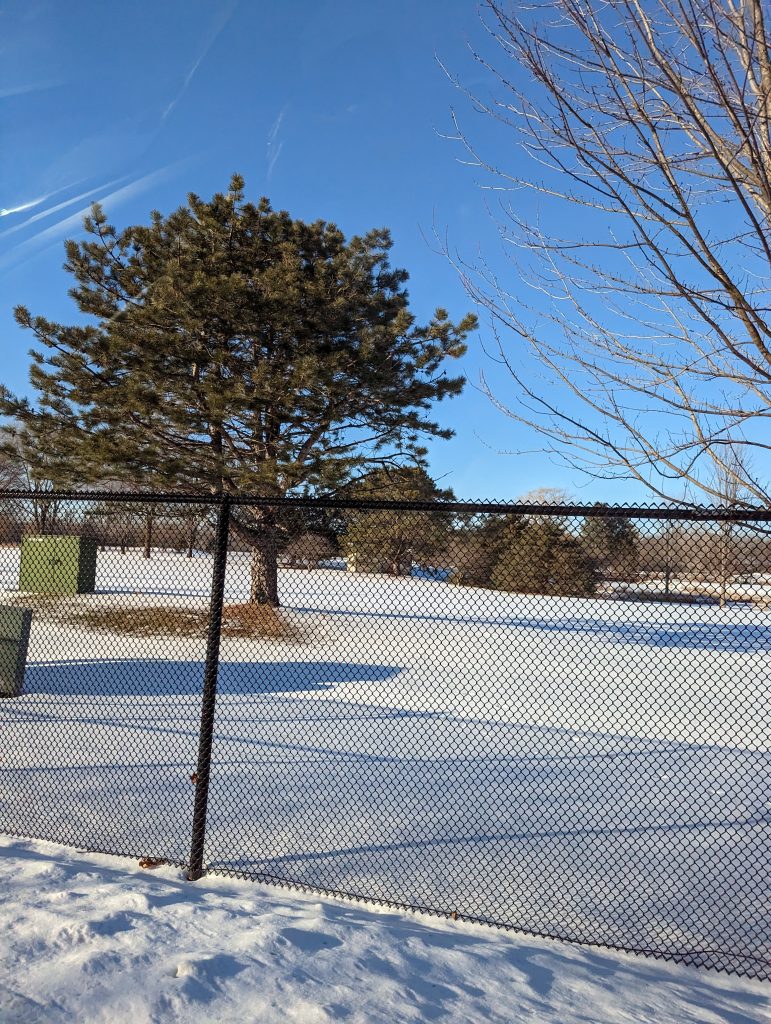I have been nerding on weather balloons for years now, and the amazing radiosonde_auto_rx project blew my mind when I first ran across it. Back then it was in it’s infancy with a handful of listeners, many of which were intermittent dabblers like me who couldn’t be bothered to keep their station running 24/7. Fast forward a few years, a country move and a child birth later and I’ve dusted off my auto_rx tracker. A month later and I’m happy to present my first two captured radiosondes!
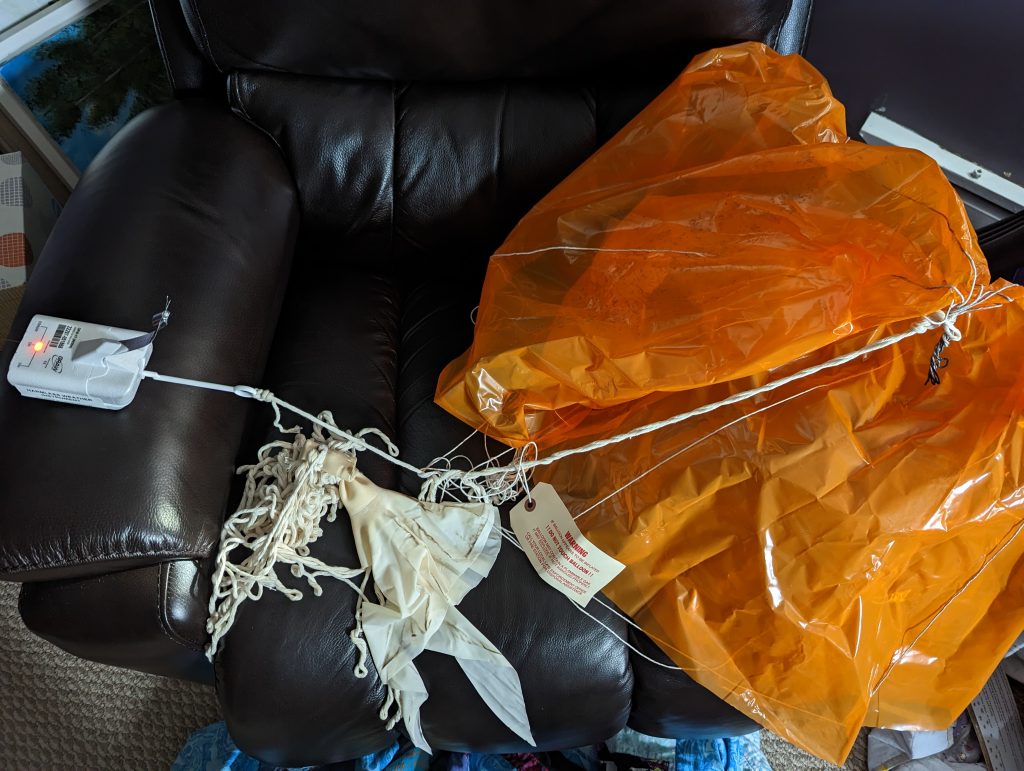
What is a radiosonde?
I’m glad you asked. Have you looked at a weather forecast lately? Radiosondes are a key part of how weather is modeled to give us these forecasts. Twice daily at hundreds of sites around the world, launched on the same schedule of noon and midnight UTC, a weather balloon is launched which conducts a “sounding” of the atmosphere. It contains at least a GPS receiver, radio transmitter, and temperature/humidity sensor which relay back to the ground station the path that the balloon takes and the conditions it passes through. The wind you feel at ground level is never what is happening above you…if you’ve ever explored maps on sites like windy.com which let you visualize wind speed at different altitudes, you can learn that the atmosphere is full of layers. It’s complicated and ever changing.
How does it come back down?
The balloon lifting the sonde expands as the atmosphere things out. Around 30km altitude (roughly 3x the altitude of a commercial airliner) the balloon reaches it’s breaking point, and pops. The sonde then falls back to earth, slowing down with a parachute to make a soft landing.
Where do they land? Who gets them?
That’s the fun part! They land all over the place, and generally speaking the service which launches them does not expect them back. I’ve read reports that some weather services ask you to post them back and even a meager reward for returning the device, but the devices I’ve found are presumably rather cheap and the sticker on them simply says to recycle or throw it away. My first one I found literally in a dumpster, having landed in a parking lot.
Why?
It’s fun! Finding a balloon is a fun chase. It takes you to a new place every time you go looking for one, which is nerve wracking and exciting. It’s proven to be fun and educational for my 4 year old daughter too. She asks questions, gets excited, and thinks about the earth.
My finds:
Lisle – golf course – January 29th
The first radiosonde I’ve ever spotted at landing. Unfortunately on the far side of a fence in a golf course during winter when the course is closed. I managed to see it – which motivated me all the more! But I’ve given up chasing it. Flight path: https://sondehub.org/22046857
February 8th – Glendale Heights
My first find! Radiosondy.info sent me a Signal message letting me know of the landing while I was eating my breakfast and hadn’t pulled up sondehub.org yet that day. At 1pm I took my daughter on a short drive to the landing site at an apartment complex ten minutes from my house. I hadn’t been smart enough to bring my auto_rx receiver so I was flying blind, hoping it would be an easy spot. After a few awkward laps driving around the parking lot I noticed a long string hanging out of a dumpster. Hopped out of the car to have a look, and sure enough, there it was. Still transmitting six hours after landing! You can view the flight path and sensor data on SondeHub: https://sondehub.org/22051868
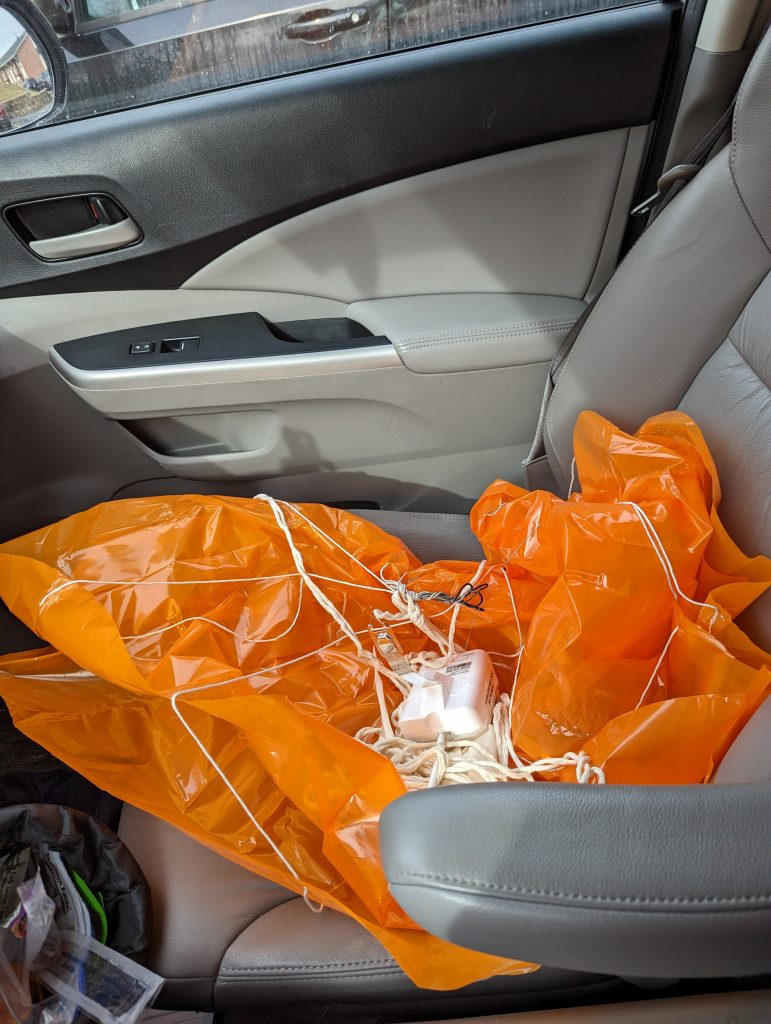
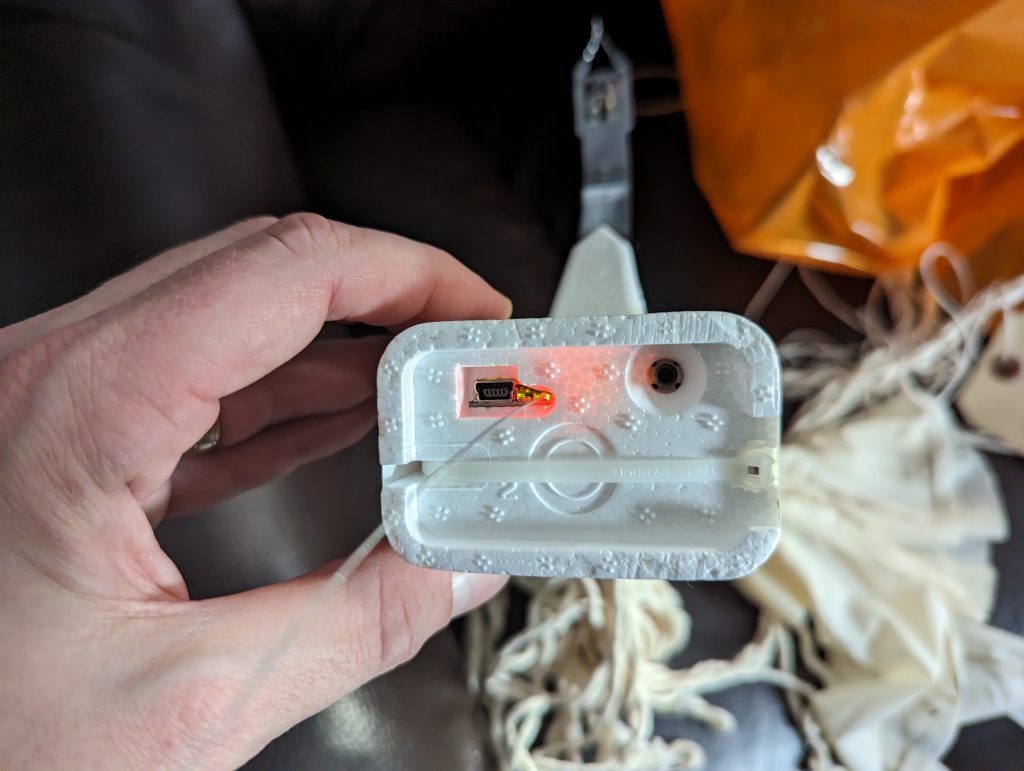
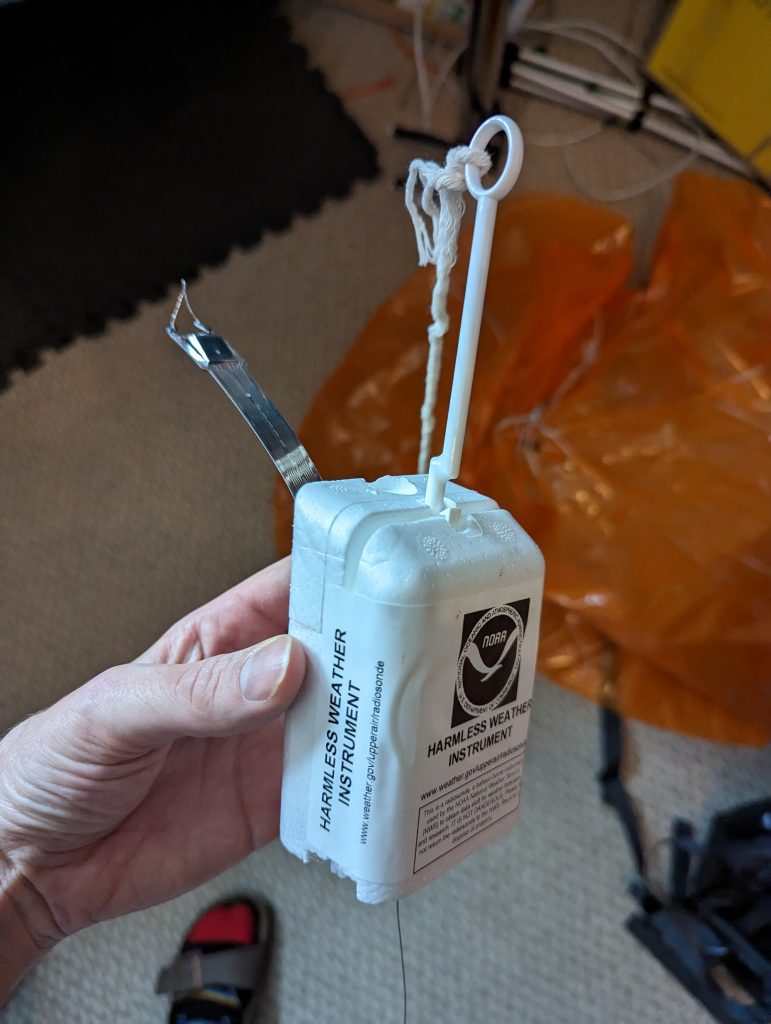

February 12th – Naperville
In the evening Radiosondy.info unexpectedly let me know that a sonde had landed at the far end of my 20km notification radius. It was late, but the tracking data provided by another receiver had the landing point pretty accurate and safely landing in a school’s football field. This time I brought my pi auto_rx receiver and an antenna with. As I drove up to the predicted landing site I realized that my USB power supply to the Pi was not powerful enough. Good I had brought a backup! Fired it up and immediately started receiving telemetry data from the sonde on the ground about 100m away. A short walk later and I had easily recovered my second radiosonde! You can view the flight path and sensor data on SondeHub: https://sondehub.org/22051876
So far:
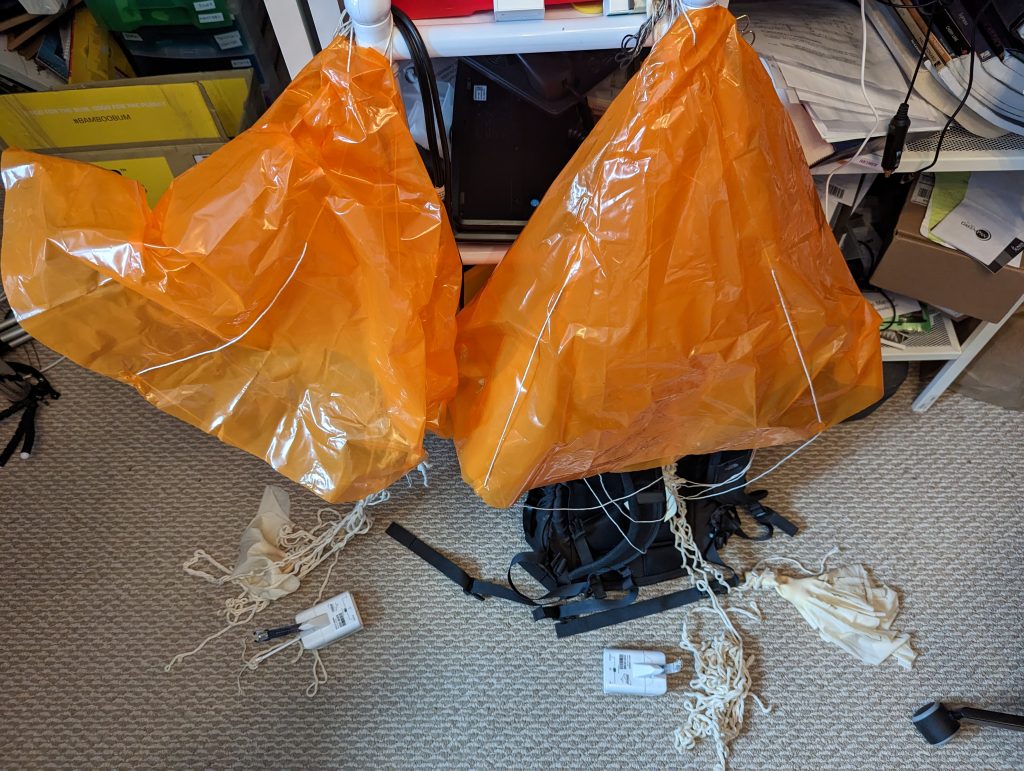
What’s next
Finding more will be fun. One landed just the other day 6k from my house, but I’m out of town so won’t get to go check out the landing site for over a week. Will it be there? Who knows.
The real goal is to do something useful with these sondes – ideally attach them to a new balloon and fly them again. I’m planning to conduct my first USA launch this summer, so if I can get some code loaded on one of them, it can ride share. Just a few hours ago I giddily found this project which I can’t wait to give a try: https://github.com/gx1400/dfm17_hamradio and whatever I can learn from https://wiki.recessim.com/view/DFM-17_Radiosonde.

